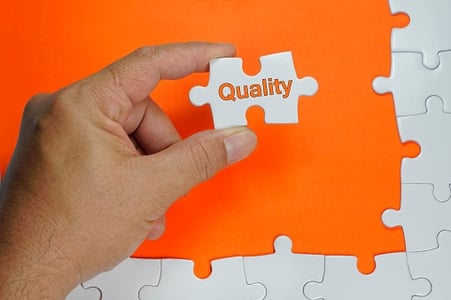
The commentary on the TNVPK evaluation continues. Study authors Farran and Lipsey wrote a pushback piece addressing critics’ claims that the study findings are due to the poor quality of TNVPK programs. They also laud the TNVPK program as being among the nation’s highest quality models. Now we’re on my favorite topic: quality.
Thanks to each of you who read my previous piece, written with Michael L. López, Does Pre-K Work? Why Measuring Quality Across Years Matters. (I know it was long. I promise, this blog is much shorter.) In that piece, we questioned the expectation that Pre-K work like an inoculation, and the thinking that “pre-K ‘pours in’ skills to the container that is a four-year old, and those skills are permanently there, they won’t leak out.” Now that information on quality measures in the TNVPK study have been shared, we ask, what do we even know about the skills that were “poured in” during the TNVPK program? We explain the need to measure quality over time with global quality measures such as the ERS and the CLASS, assess teacher preparedness and competencies, as well as adherence to curricular and assessment models.
Farran and Lipsey revealed in a linked paper that they did in fact measure quality in a different component of their study. TNVPK was set up to align with the 10 pre-K program benchmarks defined by NIEER. The TNVPK program met all except the requirement for assistant teachers to have a CDA. They also “obtained classroom ratings on typical measures used to index classroom quality” used in many other studies of Pre-K programs such as the Early Childhood Environmental Rating Scale. They conclude with smart advice, “a specific, perhaps new, definition is needed for high quality.” YES! Spot on. YES!
NIEER and the ERS capture important programmatic elements of quality, yet there is little evidence that their metrics predict child outcomes. The structural features defined in their models are advancements from licensing requirements that set the minimum standard. Alone, without examination of process quality, or teacher effectiveness, those measures provide incomplete evidence to key features that drive child outcomes. It’s like in all relationships, say, marriage. The structural features of marriage such as the resumes each person brings and houses in which couples reside are important, but do they predict marital satisfaction and long-term success? Of course not, as John Gottman has said for decades, it’s about the observable interactions. There are specific interactions that predict marital success. This isn’t any different for young children as they learn, interactions matter.
Why do we spend so much time and limited resources investing in things that are not proven to address our desired outcomes? There are lots of measures that give us insight on many important things, but when it comes to improved and sustained outcomes for children, these measures remain silent. The evidence just isn’t there. For a long time we didn’t have a good way of measuring what we knew from attachment theory mattered: relationships and interactions. The human impact on development and longer-term success is real. Now, with the CLASS, we can actually measure how effective those interactions are and, AND we can do things to positively change those interactions. The research evidence continues to grow around the short- and long-term benefits of effective teacher-child interactions. This is how to define “high quality.”

